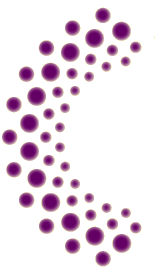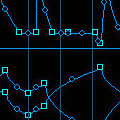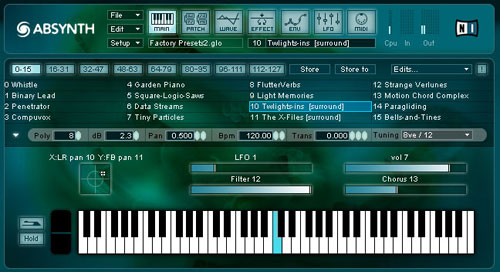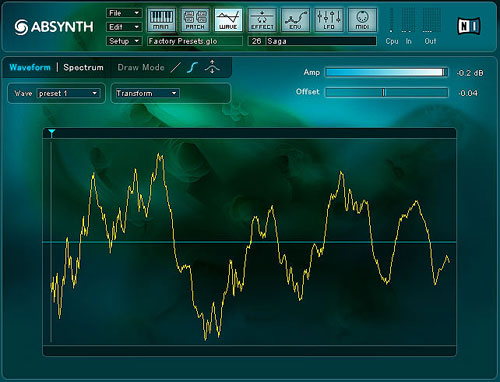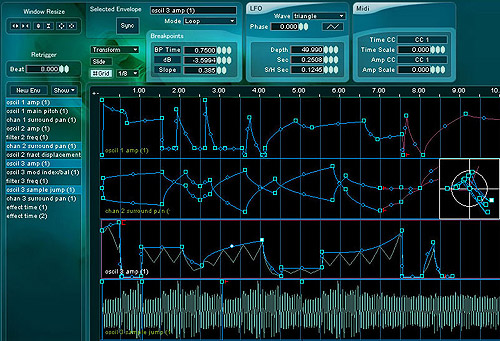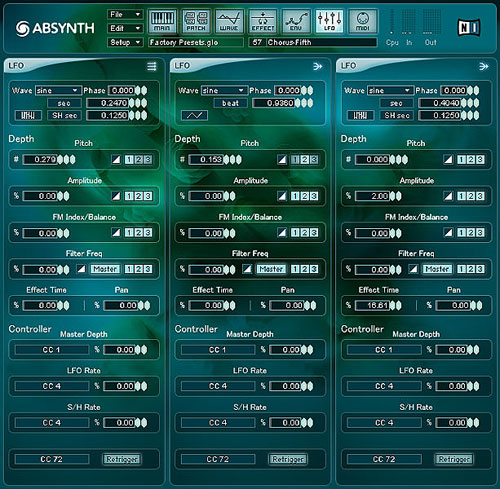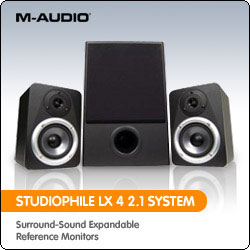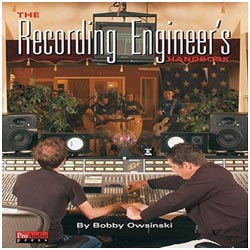|
|
|
|
|
|
|
|
|
|
|
|
|
||||||||||||||||||
 |
|||||||||||||||||||
|
|
|
|
|
September 15, 2005 ../ TestDrive: Native Instruments Absynth 3When Native Instruments announced a new version of Absynth, their popular software synthesizer, many of us at Futuremusic began to noticeably drool. For version 3, Native Instruments (NI) took the solid foundation of the Absynth platform to the next level by making almost every aspect of the program better. Absynth 3 is a must have for any musician with an interest in creating provocative ambient soundscapes, film scoring and the exploration of dynamic synthesis.
Absynth can either be accessed as a plug-in or as a standalone application. It runs natively via Core Audio on the Apple platform, and as DirectSound, MME and ASIO 2.0 on the PC. Absynth's sound engine is powered by three different sound sources dubbed Oscil Modules, each host nine different "modes" - single oscillator, double oscillator, ring modulator, FM, Subtractive Synthesis, Classic Sampling, Granular Sampling, Stereo External Input and Fractalization. Fractalization is a new mode which applies mathematical formulas to the waveform for creating undulating and formant-like sounds. The Stereo External In is another new mode that allows outside sounds to be as a source, used for modulation or, my favorite, to use Absynth as an effects processor. Nice!
Absynth's sampling is underrated and can be used in a variety of ways to create compelling aural textures. Sampling time is restricted to the amount of your computer's RAM, but I recorded about 2 minutes worth with 1 Gig of memory in our test Mac G5. Granular Sampling has several modifiers including Grain Size, Density, Speed, as well as a Randomizer for frequency, time and amplitude. Classic sampling parameters include adjustable start times, loop points and frequency. Definitely explore Absynth's sampling features to stamp your personal sonic brand on your synthesis creations. Once you've cooked up a sound, you can apply one of fourteen different filters, and then stir in some effects before routing it through a mix matrix. This where things get really fascinating. The filters are wonderful for sculpting, and sound silky smooth. The effects are a little better than average, and while they provide many options for movement and space, I'm hoping that version 4 will bring a full repertoire of comprehensive effects to Absynth's palette. You now have the option to route each source to one of eight different individual outputs, or through one of 14 different Surround Sound scenarios. Yes, you heard correctly, Absynth 3 now has full support for full surround sound! Absynth 3 offers the most flexible and wide-ranging multi-channel integration of any synthesizer currently available and supports 3.1, 4.1, 5.1, 6.1, 7.1, and 8.0 surround formats.
Absynth 3 offers several new envelope features including - Envelope Groups: Show and hide groups of envelopes, Multiple Selection: Select multiple breakpoints to then edit them all simultaneously, Envelope Cursor: A cursor per envelope indicating the current position makes editing envelopes much easier, Variable Grid Resolution: Display the optional grid using a variable resolution: in 8ths, 16ths, 32nds, beats or seconds, and Snap to grid: Optional when the grid is activated and ideal for tempo-synced envelopes. All the time-based envelope effects means that your patches can continually evolve for infinite, pulsating and organically-grown sounds.
However if all this tweaking is beyond you, don't fret, Absynth comes prepackaged with close to 1000 excellent and useful presets with many more to be found online. Absynth 3 from Native Instruments is $339. For more information hit www.nativeinstruments.com
The Future:
We'd like to see NI expand Absynth's effects section based on the
same philosophy of the current Delay-based effects. Incorporating Guitar Rig's distortion engine would be huge, especially with
Absynth's envelope control.

Copyright © 2005 Futuremusic® All Rights Reserved. |
|
|
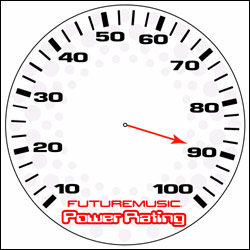 Native Instruments Absynth 3 receives a 90% PowerRating - We recommend this softsynth to any musician interested in creating unique soundscapes for Heaven, Hell and everything in between.
Now Experiments In Sound has become The Ultimate Mix Contest...
After the tremendous success of our groundbreaking The Next Big Thing DJ Contest, Futuremusic has decided to once again create a new paradigm...
News Archives
|
|
|
|
|
|
|
|
|
|
|
|
|
